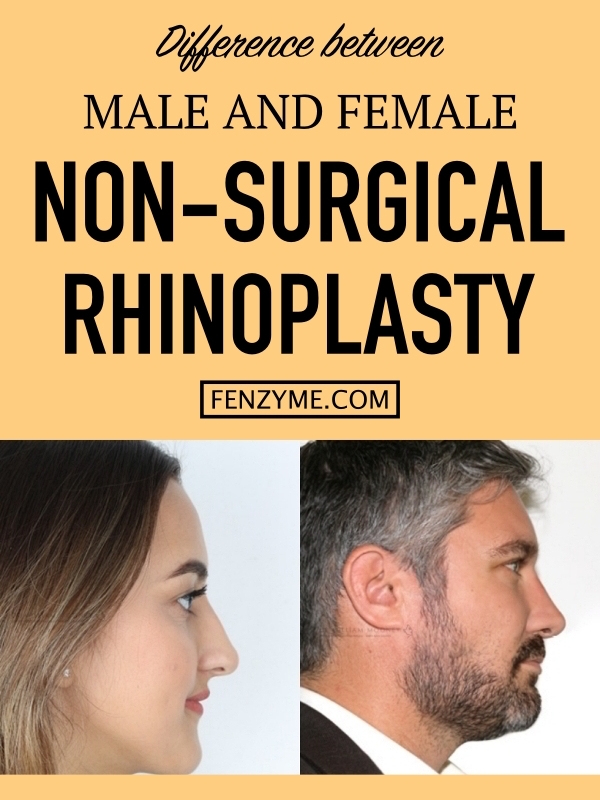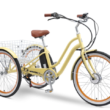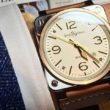Differences Between Female And Male Non-Surgical Rhinoplasty
Non-surgical rhinoplasty is becoming the next best option for traditional plastic surgery. More and more men and women are choosing this non-invasive rhinoplasty to address their nasal concerns. Men who are unhappy about the bump, dents, depression, droopy tip, wide, misaligned, or lopsided nose are now considering this corrective treatment.

It is not surprising that men are keen on getting results that will enhance their look or resolve natural or injury-related problems. Non-surgical rhinoplasty offers a safe, low-cost, and quick solution to the issue. However, there are certain differences between the male and female genders that determine the kind of procedure or treatment approach they need to receive.
Anatomical differences
- Skin thickness – Men have a thicker layer of skin, while women have finer skin on their noses.
- Length of the nose – The ideal nose length of men is slightly longer than women.
- The overall size of the nose – The typical male nasal feature is longer and more prominent. The nose should also be in proportion with the rest of the facial features. Women have more diminutive noses.
- Tip of the nose – Females have a more feminine, narrower, and more defined tip. Men have a thicker nasal tip.
Aesthetic goals
Men want a more prominent and defined nasal structure or straighter angle nose. Women favour a softer and more feminine nose with a less dorsal hump and slightly upturned tip.
Reasons
The nasal malformation is one of the primary reasons men choose to go through a non-invasive procedure. Whether the problem is natural or caused by injury, men want it to be fixed. Male athletes, especially rugby players and boxers, tend to suffer from broken noses and sports bent. Women’s reasons lean more on enhancing their natural beauty or improving the look of the facial features.
Generally, non-surgical rhinoplasty is good for the following:
- To make the nasal tip more pointed
- To raise the nose bridge
- To smooth the nasal curves
- To increase the height of the nose tip
- To correct facial symmetry
- To reduce divots and bumps
The procedure
After the initial assessment phase, a discussion of the individual goals and expectations is the next step. As mentioned before, the approach of treatment may differ due to the differences in the anatomy and features of the nose.

The doctor will subject the patient to a thorough examination of the facial structure and nasal profile. It helps to tailor suit the treatment according to the dimension of the face. The lip and chin projection are always taken into account for liquid rhinoplasty.
Before the procedure, a numbing cream or topical anaesthesia will be applied to numb the surface of the nose. Some dermal fillers contain a local anaesthetic to make the treatment more comfortable and painless.
The doctor will inject the gel-like substance into the selected parts of the nose. Getting a medical practitioner to administer the procedure is very crucial. Inexperienced injectors may cause sudden blindness or tissue death in one erroneous prick of the needle.
Post-treatment care

Patients are given instructions regarding proper care to eliminate serious symptoms due to nasal skin stress and infection. After-care is extremely vital to sustain the results. It may require nasal tip support during the first few days.
- Avoid wearing eyeglasses for at least 48 hours.
- Use ice packs to reduce the swelling and slight bruising.
- Take pain medications or apply topical creams that are recommended by your doctor to ease the discomfort.
- Avoid strenuous workouts for a couple of days to prevent the bruising from getting worse.
- Do not apply topical skincare products or makeup to the injected area for 24 hours.
- Do not press or massage your nose because it will alter the shape of the dermal filler.
- Avoid blood-thinning medication like aspirin because it can prolong the recovery period or aggravate the bruise.
- Avoid going to places that emit intense heat like hot yoga class and sauna for a week or two.
- Avoid excessive sun exposure.
If you experience the following symptoms after the non-surgical rhinoplasty, call your doctor immediately:
- Blurred vision
- Worsening and spreading discolouration, bruising, and redness
- Severe pain
- Signs of allergic reactions or hives
Benefits and downsides
Pros
- The result is immediately visible, but the full benefits can be fully appreciated after two weeks.
- It has little to no downtime.
- It resolves and corrects minor depressions.
- It is reversible if you don’t like the results.
- It is safe and painless.
- It is less expensive than a surgical procedure.
- Quick procedure
Cons
- It only camouflages the bump or hump but does not make the nose smaller.
- The result is temporary.
- It does not treat functional issues.
- It may cost more in the long run due to regular treatment to sustain the results.
Ultimately, the ability of natural cosmetic enhancement to be adjusted to suit the needs of the patient and the lesser risk of disfigurement make non-surgical rhinoplasty widely popular to both men and women. If you’re thinking of getting the treatment, make sure to seek a Doctor in your area.





